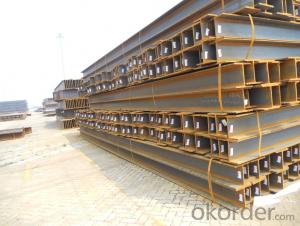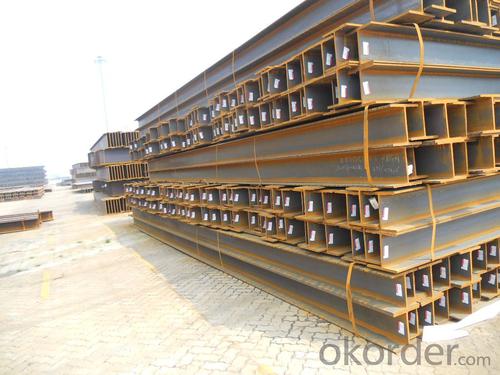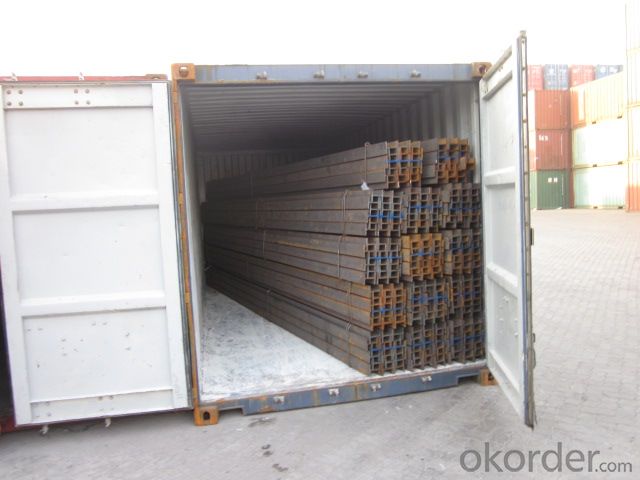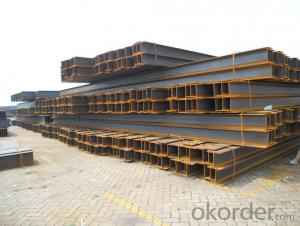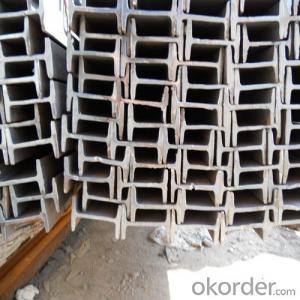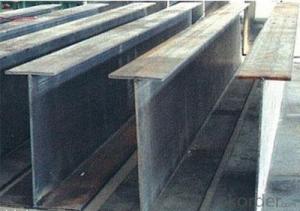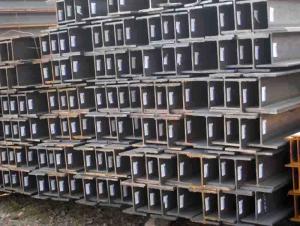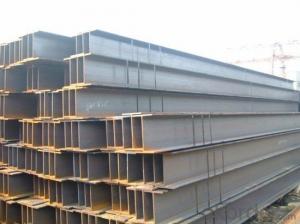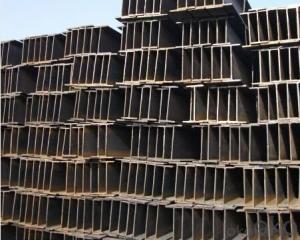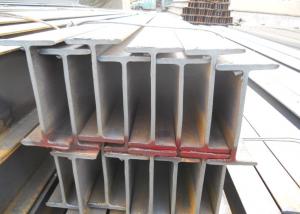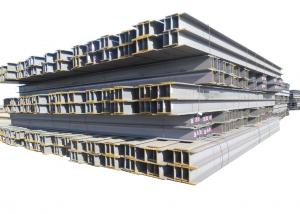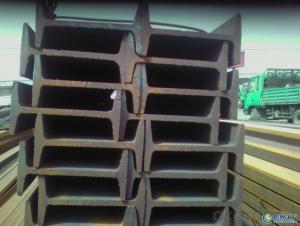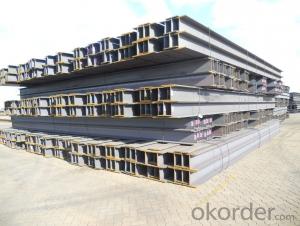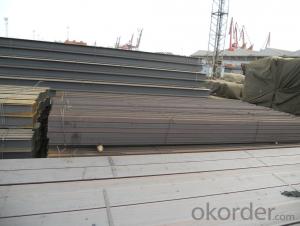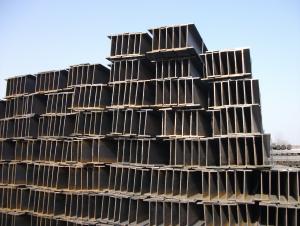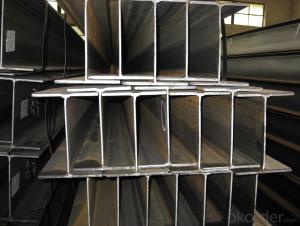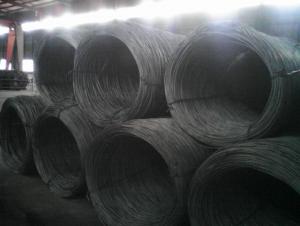Hot Rolled Steel H-Beam for Structure Steel
- Loading Port:
- Tianjin
- Payment Terms:
- TT OR LC
- Min Order Qty:
- 30000 m.t.
- Supply Capability:
- 150000 m.t./month
OKorder Service Pledge
OKorder Financial Service
You Might Also Like
Specification
Product Description:
Product Description:
OKorder is offering Hot Rolled Steel H-Beam for Structure Steel at great prices with worldwide shipping. Our supplier is a world-class manufacturer of steel, with our products utilized the world over. OKorder annually supplies products to European, North American and Asian markets. We provide quotations within 24 hours of receiving an inquiry and guarantee competitive prices.
Product Applications:
Hot Rolled Steel H-Beam for Structure Steel are ideal for structural applications and are widely used in the construction of buildings and bridges, and the manufacturing, petrochemical, and transportation industries.
Product Advantages:
OKorder's Hot Rolled Steel H-Beam for Structure Steel are durable, strong, and resist corrosion.
Main Product Features:
· Premium quality
· Prompt delivery & seaworthy packing (30 days after receiving deposit)
· Corrosion resistance
· Can be recycled and reused
· Mill test certification
· Professional Service
· Competitive pricing
Product Specifications:
Specifications of Hot Rolled Steel H-Beam for Structure Steel
1. Standard: GB700-88, Q235B2.
2. Grade: Q235, SS400 or Equivalent
3. Length: 6m,10m, 12m as following table
4. Invoicing on theoretical weight or actual weight as customer request
5.Payment: TT or L/C
6. Sizes:
SIZE(mm) | DIMENSION(kg/m) |
100*100 | 16.9 |
125*125 | 23.6 |
150*75 | 14 |
150*150 | 31.1 |
148*100 | 20.7 |
198*99 | 17.8 |
200*100 | 20.9 |
248*124 | 25.1 |
250*125 | 29 |
Usage & Applications of Hot Rolled Steel H-Beam for Structure Steel
Commercial building structure ;Pre-engineered buildings; Machinery support structure; Prefabricated structure; Medium scale bridges; Ship-building structure. etc.
Packaging & Delivery of Hot Rolled Structural Steel H Beam
1. Packing: it is nude packed in bundles by steel wire rod
2. Bundle weight: not more than 3.5MT for bulk vessel; less than 3 MT for container load
3. Marks:
Color marking: There will be color marking on both end of the bundle for the cargo delivered by bulk vessel. That makes it easily to distinguish at the destination port.
Tag mark: there will be tag mark tied up on the bundles. The information usually including supplier logo and name, product name, made in China, shipping marks and other information request by the customer.
If loading by container the marking is not needed, but we will prepare it as customer request.
4. Transportation: the goods are delivered by truck from mill to loading port, the maximum quantity can be loaded is around 40MTs by each truck. If the order quantity cannot reach the full truck loaded, the transportation cost per ton will be little higher than full load.
5. Delivered by container or bulk vessel
Production flow of Hot Rolled Structural Steel H Beam
Material prepare (billet) —heat up—rough rolling—precision rolling—cooling—packing—storage and transportation
FAQ:
Q1: Why buy Materials & Equipment from OKorder.com?
A1: All products offered byOKorder.com are carefully selected from China's most reliable manufacturing enterprises. Through its ISO certifications, OKorder.com adheres to the highest standards and a commitment to supply chain safety and customer satisfaction.
Q2: How do we guarantee the quality of our products?
A2: We have established an advanced quality management system which conducts strict quality tests at every step, from raw materials to the final product. At the same time, we provide extensive follow-up service assurances as required.
Q3: How soon can we receive the product after purchase?
A3: Within three days of placing an order, we will begin production. The specific shipping date is dependent upon international and government factors, but is typically 7 to 10 workdays.
Q4: What makes stainless steel stainless?
A4: Stainless steel must contain at least 10.5 % chromium. It is this element that reacts with the oxygen in the air to form a complex chrome-oxide surface layer that is invisible but strong enough to prevent further oxygen from "staining" (rusting) the surface. Higher levels of chromium and the addition of other alloying elements such as nickel and molybdenum enhance this surface layer and improve the corrosion resistance of the stainless material.
Images:
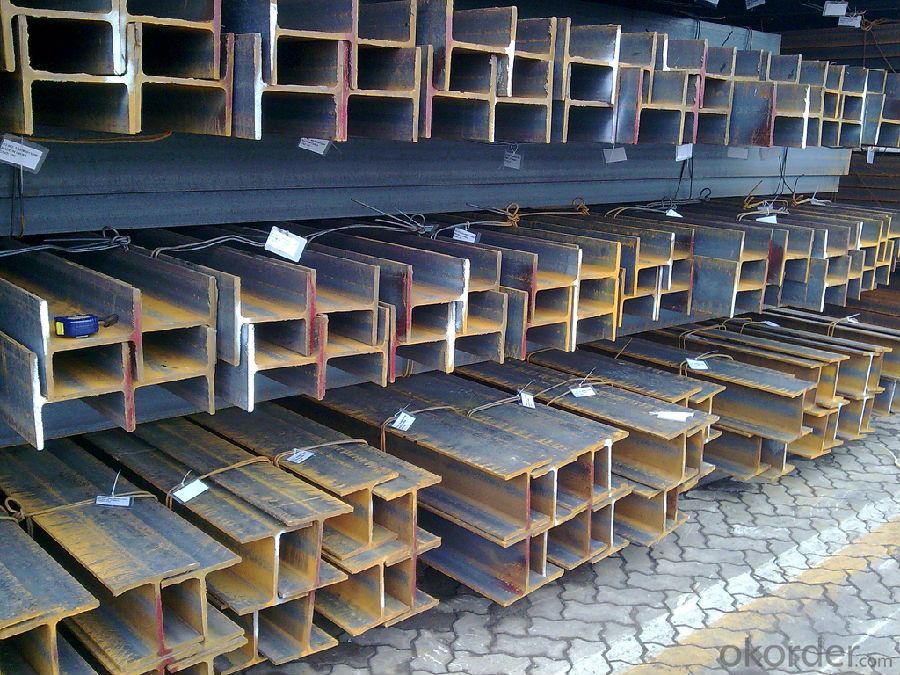
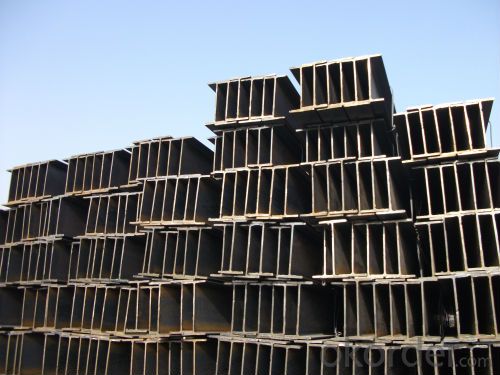
- Q: Can steel H-beams be used in airport hangar or aircraft maintenance facilities?
- Airport hangars or aircraft maintenance facilities can indeed utilize steel H-beams. These beams possess versatility as structural elements, providing an exceptional strength-to-weight ratio and capacity for bearing loads. Their usage is prevalent in construction endeavors that necessitate expansive spaces, such as aircraft hangars and maintenance facilities. The H-shaped configuration of these beams bestows them with structural stability and rigidity, rendering them suitable for supporting substantial loads and enduring the dynamic forces associated with aircraft operations. Moreover, steel H-beams can be conveniently fabricated and installed, enabling efficient construction and customization to cater to specific design requisites. In summary, due to their strength, durability, and versatility, steel H-beams are an esteemed choice within the aviation industry.
- Q: Can steel H-beams be used for museums or cultural centers?
- Yes, steel H-beams can certainly be used for museums or cultural centers. Steel H-beams have been widely used in construction projects, including the building of museums and cultural centers, due to their structural strength and versatility. These beams are capable of providing the necessary support for large open spaces and can be used to create unique and visually appealing architectural designs. Additionally, steel H-beams are durable and resistant to environmental factors, making them suitable for long-term use in museums and cultural centers.
- Q: Which is better, I-beam or HN steel?
- Section H steelConvenient drilling, stiffening plate and other additional processesThe thickness of the two legs is inconsistent
- Q: Can steel H-beams be used for agricultural buildings?
- Agricultural buildings can indeed utilize steel H-beams. The strength, durability, and versatility of steel H-beams make them a popular choice in construction. When it comes to agricultural buildings like barns, sheds, or storage facilities, steel H-beams provide exceptional structural support. They have the ability to bear heavy loads and offer protection against harsh weather conditions such as wind, snow, and rain. Furthermore, steel is a non-combustible material, ensuring safety for agricultural buildings. The flexibility of steel allows for various design possibilities and adjustments to cater to specific agricultural requirements. All in all, steel H-beams are a trustworthy and effective option for constructing robust agricultural buildings.
- Q: Can steel H-beams be used in the construction of educational institutions or schools?
- Certainly! Steel H-beams are indeed applicable for the construction of educational institutions and schools. Their strength and durability make them a popular choice in the construction industry. These beams offer exceptional structural support, making them suitable for a wide range of purposes, including educational buildings. Within educational institutions, steel H-beams can be utilized in the construction of school buildings, gymnasiums, auditoriums, and other facilities. They possess the capacity to bear heavy loads such as floors, walls, and roofs, ensuring the safety and stability of the structure. Moreover, steel H-beams are resistant to fire and termites, and they have a long lifespan, making them a dependable option for educational construction projects.
- Q: What are the common applications of steel H-beams?
- Steel H-beams have numerous common applications in the construction and engineering industries. They are widely used as structural supports in buildings, bridges, and infrastructure projects due to their high strength and load-bearing capacity. H-beams are also commonly utilized in the fabrication of heavy machinery, such as cranes and equipment frames, as well as in the construction of mezzanines, platforms, and industrial structures. Their versatility, durability, and ability to withstand heavy loads make steel H-beams a popular choice in various construction applications.
- Q: How do steel H-beams perform in high-rise buildings?
- Steel H-beams perform exceptionally well in high-rise buildings due to their superior strength and load-bearing capacity. These beams provide structural stability and support, ensuring the building's overall integrity and resilience. The H-shaped design allows for optimal weight distribution, minimizing the risk of structural failure or collapse. Additionally, steel H-beams are versatile, allowing architects and engineers to create efficient and flexible designs for high-rise structures.
- Q: How do steel H-beams contribute to energy-efficient building designs?
- Steel H-beams play a crucial role in energy-efficient building designs due to their numerous benefits. Firstly, H-beams are known for their high strength-to-weight ratio, meaning they can support heavy loads while minimizing the amount of steel required. This, in turn, reduces the overall weight of the building's structure and foundation, resulting in energy savings during construction, transportation, and installation. Additionally, H-beams offer excellent structural integrity, ensuring the stability and durability of the building. Their ability to resist bending and twisting forces allows for the construction of taller and wider spaces without the need for excessive support columns or walls. The open web design of H-beams also facilitates the installation of insulation materials, enhancing the building's thermal efficiency and reducing energy consumption for heating and cooling. Furthermore, H-beams can be easily fabricated and customized to fit specific architectural designs, enabling architects to optimize the building's layout for natural lighting and ventilation. By incorporating large windows, skylights, and open spaces, energy-efficient buildings can maximize natural daylight, reducing the need for artificial lighting during the day. Similarly, proper ventilation systems can be integrated, utilizing natural airflows to cool the building and decrease the reliance on energy-intensive air conditioning. Moreover, steel H-beams possess excellent fire resistance properties, which is critical for energy-efficient buildings. Their ability to withstand high temperatures and prevent the spread of fire enhances the safety of occupants and reduces the risk of structural damage. Consequently, the need for fireproofing measures, such as additional insulation or sprinkler systems, can be minimized, saving energy and resources in the long run. In summary, steel H-beams contribute significantly to energy-efficient building designs through their high strength-to-weight ratio, structural integrity, thermal efficiency, versatility in design, and fire resistance. By utilizing these beams, architects and builders can create sustainable and environmentally-friendly structures that promote energy conservation, reduce greenhouse gas emissions, and contribute to a more sustainable future.
- Q: Can Steel H-Beams be used in agricultural or industrial buildings?
- Yes, Steel H-Beams can be used in both agricultural and industrial buildings. Due to their high strength-to-weight ratio and durability, H-Beams are commonly utilized in constructing structures that require a strong and stable framework, such as warehouses, barns, factories, and other industrial facilities. The versatile nature of H-Beams makes them suitable for withstanding heavy loads and providing structural support in these types of buildings.
- Q: Can steel H-beams be used in data center construction?
- Yes, steel H-beams can be used in data center construction. Steel H-beams provide excellent structural support and load-bearing capacity, making them suitable for constructing data centers that require robust and secure infrastructure.
Send your message to us
Hot Rolled Steel H-Beam for Structure Steel
- Loading Port:
- Tianjin
- Payment Terms:
- TT OR LC
- Min Order Qty:
- 30000 m.t.
- Supply Capability:
- 150000 m.t./month
OKorder Service Pledge
OKorder Financial Service
Similar products
Hot products
Hot Searches
Related keywords
